|
Dear Strings Practicum students,
Below is the information that you need for this week regarding the final exam, rental returns, and course evaluations. Please get in touch if there is anything I can help you with until Wednesday. Best regards, Bill. FINAL EXAM: Per the syllabus and as discussed in class, the exam will be held in our regular room on Wednesday, December 18th. Please note that the starting time of the exam is 6pm and the end time is 7:50pm. The exam is an 'open note' test as outlined on the blog post on 11.16.19 and pasted below. (reminder: bring your notes/devices to the exam!) A written final exam is required for this course. The exam will be held on December 18 and will be an 'open note' exam (100 total points). • Section I: identifying the parts and notes of violin family instruments (20 points) (assignment and materials available on the blog post from 9.04.19) • Section II: strategies for determining proper instrument sizes and correcting student posture and technique; referring to chapter two from Strategies for Teaching Strings (30 points) (assignment and materials available on the blog post from 9.11.19) • Section III: reflection of in-class performance and teaching activities (20 points) • Section IV: final performance exam.
Any student that is unable to take the exam during our scheduled time is welcome to take the online version. The online exam is available at this link and is 'live' at this time. INSTRUMENT RENTAL RETURNS: If you are finished with your instrumental videos before December 18th, you may return your rental instrument by coordinating with Ms. Noreen Goldberg (her office is on the 11th floor). If you plan to take the exam in class, and also use your rental until that day, you may bring your instrument to the exam. COURSE EVALUATIONS: If you haven't already done so, I hope you will complete the course evaluation that is linked here. https://research.steinhardt.nyu.edu/a/oce/
0 Comments
REMAINING SCHEDULE OF PRESENTATIONS Congratulations and thank you to the students that directed our class ensemble last week, November 20th. Everyone did a wonderful and inspriring job with their conducting and unique lesson activities. Below is the student schedule for the remaining student-led conducting projects on December 4th and 11th. The order is mostly alphabetical, with exceptions for students who have previously reached out with scheduling conflicts. PLEASE ARRIVE EARLY, TUNE, AND ASSEMBLE YOURSELF AND THE ROOM INTO ORCHESTRAL SEATING So that each student presenter will have their entirely allotted time, please arrive as early, tune and arrange yourself and the room into our orchestral sections. (conductor’s left-to-right: violins, viola, cello, and bass.) FINAL EXAM REMINDER
Here is a gentle reminder to review and prepare for the written and performance requirements of our Final Exam. The information that you need is below in the blog post from November 16. Please email with any questions or concerns. CLASS AGENDA FROM NOVEMBER 13.
Housekeeping: (1) general instrument issues, (2) overview of video performance test/final and student-led conducting projects, (3) and tuning. Essential Elements review: in-class review of EE exercises assigned in previous week EE #144 through #166. Read-through of three, first-year string orchestra arrangements: Hunter’s Chorus, Rigaudon, and Scarborough Fair. PRACTICE ITEMS FOR NOVEMBER 20, DECEMBER 4 and 11: REMAINING ESSENTIAL ELEMENTS EXERCISES ASSIGNED FOR IN-CLASS READING, NOVEMBER 20, DECEMBER 4 and 11: (revised, from our syllabus. PDF of EE teacher edition #167 through #192 linked here) Links to parts and scores: Hunter's Chorus ( PDF of parts and the score are linked here) Rigaudon ( PDF of parts and score are linked here) Scarborough Fair ( PDF of parts and score are linked here) ___________________________________________________ STUDENT-LED CONDUCTING PROJECTS Student-led conducting projects will take place during class on November 20, December 4 and 11. Each student will plan for, and then conduct the class as an ensemble. Please prepare from the three categories below: 1, warmup scales or technical patterns/exercises of your choice; 2, your choice of EE exercises #167-182 (PDF of teachers edition linked here); 3, orchestral repertoire chosen from the following: EE orchestral arrangements #188-192, Hunter's Chorus, Rigaudon, and/or Scarborough Fair. • lessons must be no longer than 9 minutes (with an additional 2 minutes for debrief/changeover). • limiting your focus to two of the above three categories will allow you to spend more time on each selection. [additional time will be allocated for tuning and warmups for the first participant of each class meeting] • written lesson plans are not required, but it is advisable to make written notes for your reference. • print, tape, annotate, and bring the scores to any repertoire you plan to rehearse (PDFs linked above). It is advisable to practice conducting your selections while listening to the audio, which is streamable at www.JWPepper.com (search by title and arranger). November 20 conductors are scheduled in this order: Zydae, Theodora, Regina, Odalys, Britt, B.J., Alissa, Alena. Remaining conducting slots will be determined on November 20. (email if there is a need to schedule on either the 4th or 11th) ________________________ FINAL EXAM A written final exam is required for this course. The exam will be held on December 18 and will be an 'open note' exam (100 total points). • Section I: identifying the parts and notes of violin family instruments (20 points) • Section II: strategies for determining proper instrument sizes and correcting student posture and technique; referring to chapter two from Strategies for Teaching Strings (30 points) • Section III: reflection of in-class performance and teaching activities (20 points) • Section IV: final performance exam.
Housekeeping: (1) class conflict for some sophomores, (2) tuning. (4:55 to 5:05)
Essential Elements Review: in-class review of EE exercises assigned during midterm peer-teaching weeks: #89, #101, #106, #113, #114, #116, #125, #128, #129, #132, #134, #135, #137, #141 (5:05 to 6:15) Student-led ensemble rehearsal projects introduction/overview: (6:15 to 6:35) In this activity, students will direct the class as an ensemble through typical rehearsal activities such as warmups, method book exercises, and first-year string orchestra repertoire. Because we had so many students out on November 6, and we are slightly behind in our EE reading due to the extent of our midterm peer-teaching, this final activity will be revised and begin on November 20 and then continue on December 4 and 11. Additional details will be provided on November 13. PRACTICE ITEMS FOR NOVEMBER 13: ESSENTIAL ELEMENTS EXERCISES ASSIGNED IN-CLASS READING, NOVEMBER 13: (revised, from our syllabus) students should be prepared to play EE exercises #144 through #166 in class, November 13. ORCHESTRAL REPERTOIRE THAT WILL BE INTRODUCED IN CLASS ON NOVEMBER 13: Hunter's Chorus (we looked at this before midterms, PDF of parts and the score are linked here) Rigaudon (new arrangement, PDF of parts and score are linked here) Scarborough Fair (new arrangement, PDF of parts and score are linked here) Strings Practicum Midterm Assignment PLAN (hard copy due on the day that you are scheduled to teach your lesson, October 1-30) Using the lesson plan template in the chapter 2 reading from “Strategies for Teaching Strings” found on page 47 of the book (pdf page 16) and also posted on our class website, plan a 35-minute semi-private lesson in which you will teach the following: Technique: Rote teaching of posture, LH/RH technique, and D scale. [refer to diagrams on class website and Essential Elements exercise 64 for written note association] Method/Repertoire: plan to teach exercises 71 Au Claire De La Lune, 73 Buckeye Salute [time permitting: 83 Four by Four, 86 Ode to Joy] Ensure account for timing/pacing/sequencing in your lesson plan. Include which Strategies for Strings “strategies” you will employ as marked. TEACH (during October 16-30 classes as posted) Teach your prepared lesson to the assigned students who are learning/teaching a different “primary” string instrument in our class. LEARN (during October 16-30 classes as posted) Receive a semi-private lesson from a student who is learning/teaching a different “primary” string instrument in our class. REFLECT (due via email by Friday November 1 at 11:59PM) Write and submit a two- to three-page double spaced, 12-point font (times) reflection on your experience in each of the above three domains (plan, teach, learn); and how these insights will inform your future teaching. Midterm files
Tuning (before class start if possible) Housekeeping: (1) general instrument issues, (2) religious holidays are excused, please email if you plan to observe, (3) tuning. (4:55 to 5:05) Mini Lesson: Class review of EE exercises assigned last week: #73, #76, #78 (slow bow), #81, #82 (LH pizz), #83 (4thfinger violin, viola) (Rote learning Suzuki finger ex. No. 1), #86 #88, #89 (5:05 to 5:20) Pre-listen: Hunter’s Chorus, orchestral arrangement. (5:20 to 5:25) Group Work: In sectionals, practice of Hunter’s Chorus (5:25 to 6:05) Group Work Sharing: ‘glows and grows’ (6:05 to 6:10) Ensemble play Hunter’s Chorus: orchestral arrangement, and (time permitting, quick look at EE reading for next week #90-107): #91, #92, #102, #102 #106, #107 (6:10 to 6:35) Link to Hunter's Chorus...for replacement of lost parts.
Tuning (before class start if possible) Housekeeping:(1) general instrument issues. (2) Religious holidays are excused, please email if you plan to observe. (4:55 to 5:05) Mini Lesson:Class review of EE exercises assigned last week: #32(pizz) #22(pizz), #34 (pizz), #36 (pizz). #52, #53, Bow Builder (student echo), #70, #71 (5:05 to 5:25) Tuning as a group (5:25 to 5:30) Group Work:In sectionals: review of above exercises, major scale (pizz.) and open string bowing. Extension move forward with exercises listed below (5:30 to 6:15) Group Work Sharing:‘glows and grows’ (6:10 to 6:15) Ensemble play (quick look at EE reading for the week #72-89): #73, #76, #78 (slow bow), #81, #82 (LH pizz), #83 (4thfinger violin, viola), #86 #88, #89 (6:15 to 6:35) Sept 18 agendaTuning (before class start if possible)
Housekeeping: (1) Chapter 2 notes on LH RH technique written assignment is now due. Please submit via email no later than tomorrow, Thursday 11:59pm for full credit. (2) next week we will begin working through Essential Elements as an ensemble. Please practice through exercise #71 for next class (9.25) per syllabus. (3) Religious holidays are excused, please email if you plan to observe. (4:55 to 5:05) Mini Lesson: Overview of Essential Elements key-concepts (through #71): sustained LH finger marking, up and down bow markings, entire book up to this point is essential meeting the notes of the D major scale on your instrument and on paper. (1) rosin and sandpaper, (2) bow tightening, (3) review of LH and RH technique high and low strings, (4) review of open string (D) scale fingering. (5:05 to 5:20) Tuning as a group (5:20 to 5:30) Group Work: In sectionals: major scale (pizz.) and open string bowing. Extension: bowing the major scale (6:10 to 6:15) Group Work Sharing: ‘glows and grows’ (6:10 to 6:15) Ensemble play: major scale, pizz and arco. “Pepperoni Pizza.” (6:15 to 6:35) Reading assigment: Chapter 2 from Strategies for Teaching Strings This chapter really has a lot of practical information. For this week, please read the following sections: Guiding Principles for Teaching Strings (pages 33-35); Performance Goals and Objectives of First- and Second-Year String Classes (pages 36-38); Strategies for Determing Proper Instrument Sizes (pages 38-39). Also please read pages 40-68, which include sections on holding the instrument, posture, hand positions, left-hand shape, and bowing strategies. Please focus your reading on the sub-sections for your rented instrument. Make notes, or a brief outline on how you would instruct someone in each of these areas (the videos mentioned in the text are linked on the resourses page of this site). Our class will be most effective when we devote time to teaching and learning from each other. Accordingly, next meeting I'd like to spend part of our session with each of you teaching what you've learned from this reading to your fellow students that play different instruments and vice verse. Here is a link to the reading. Essential Elements Because you all know the major scale starting on open strings, Please practice exercises 1-32. We won't play through each exercise in class next week (9.18), but will touch a few, so please review the exercises up through #32 so these reading will work as review and not new material. Great meeting yesterday and what a wonder orchestra we have in the making. Below is the instrument selections as discussed in class. Please email me if you have questions or issues with your instrument or rental. Quick reminder that your rental agreement must be completed online at www.kandsmusic.com no later than 5pm tomorrow, Friday, in order to have an instrument for our next meeting (which is required). A note to bassists: As discussed, we are working to make bass rentals possible and there have been several discussions and phone call to make it work. I'll be in touch with each bassist via email as updates are available. 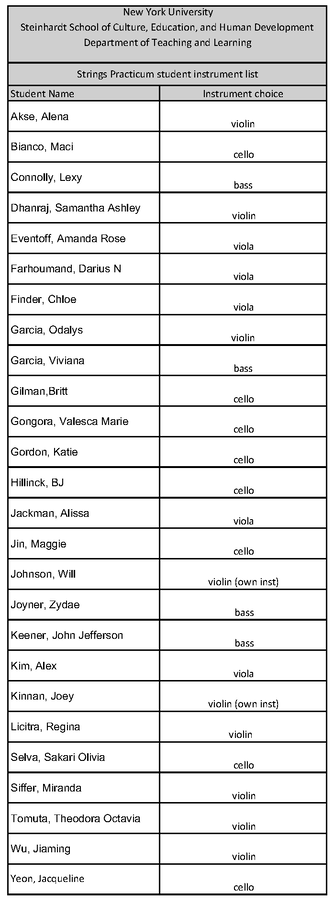 Rent your instrument1: RENT YOUR INSTRUMENT (as determined in class on 9.4.19) K & S Music is the rental provider offering special discounting and service for NYU Steinhardt. Go to www.kandsmusic.comand enter rental code: 800. Then select NYU and follow prompts. Complete rental agreement no later than Friday September 6 (5pm) to ensure delivery of your instrument by class on September 11. You must have an instrument at that meeting to receive class credit for the day. 2: PARTS OF INSTRUMENT DIAGRAM Find, or create, a student handout that illustrates the parts of the instrument which you will be renting. Bring a hard copy of this diagram to class to receive credit. 3: BEGIN TO FIND/LEARN THE NOTES ON YOUR INSTRUMENT WITH THE OPEN-STRING MAJOR SCALE PATTERN Using a right hand, pizzicato, play the open-string major scale pattern as illustrated below (Key of A for violins shown below, but try starting on D for viola and cello). Then use the same fingering beginning on other open strings to play those major scales: HAVE FUN LEANING THE NOTES IN FIRST POSITION
Learn the string names and note names for first position. Find a diagram online that you like, print it and bring it to class for your reference. Below are some diagrams that I like. |
AuthorWrite something about yourself. No need to be fancy, just an overview. Archives
December 2019
Categories |
||||||||||||||||||||||||
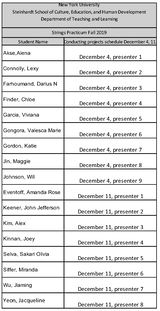
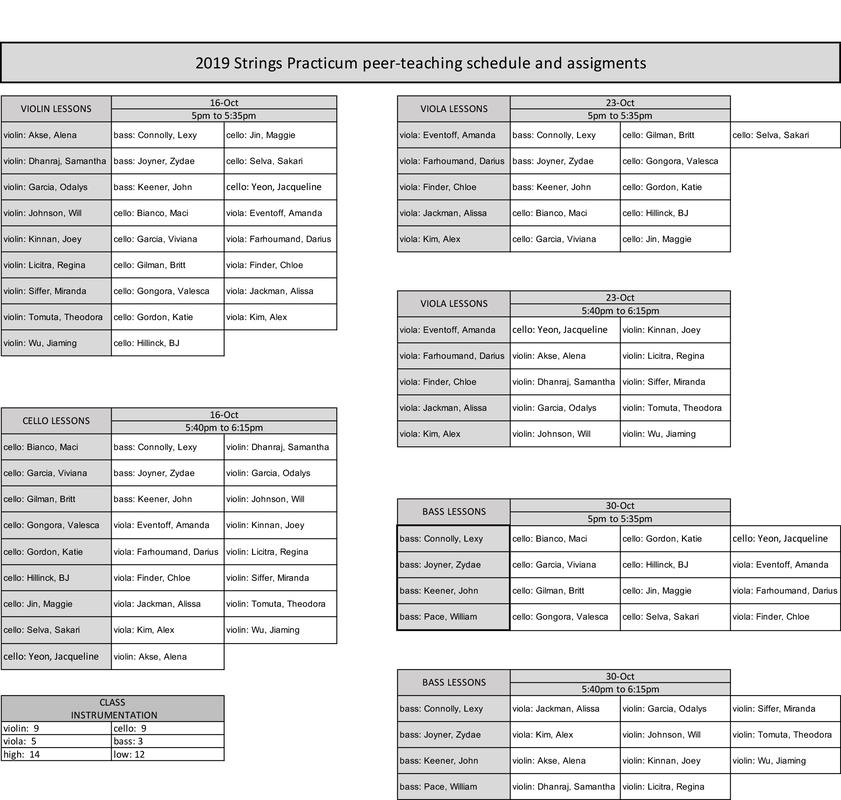
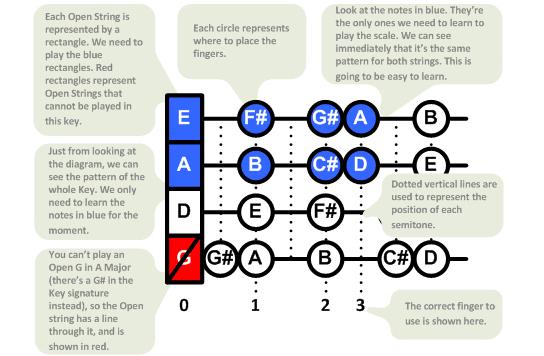
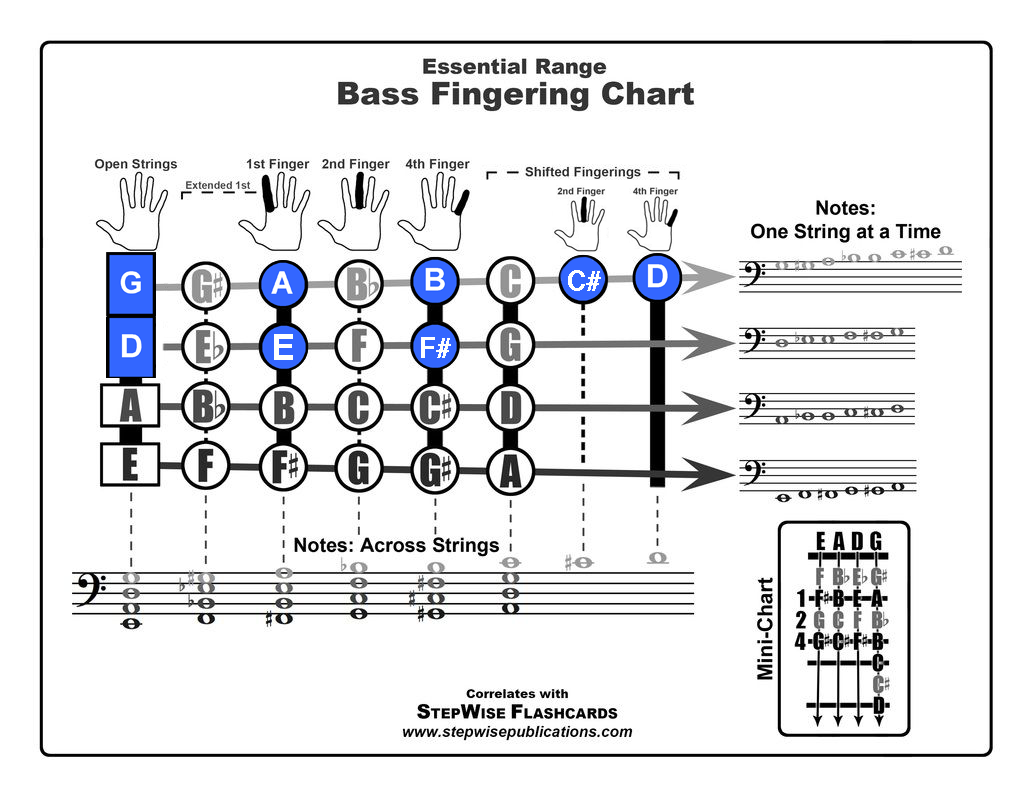
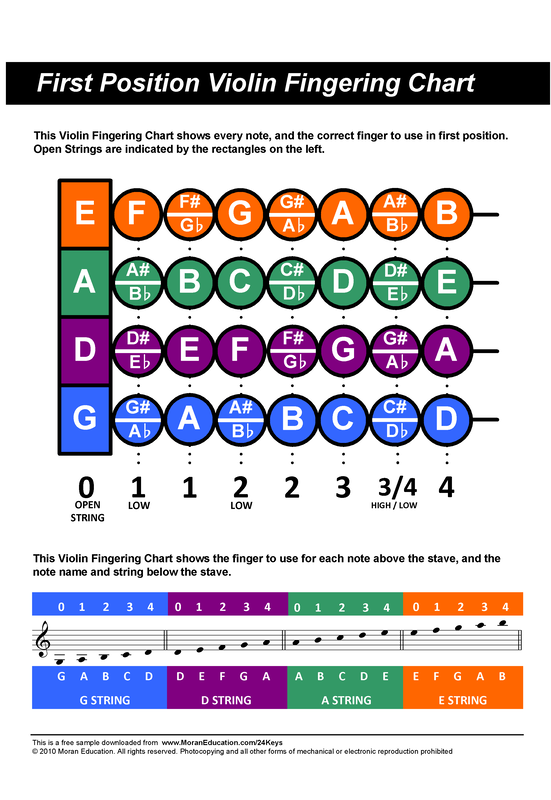
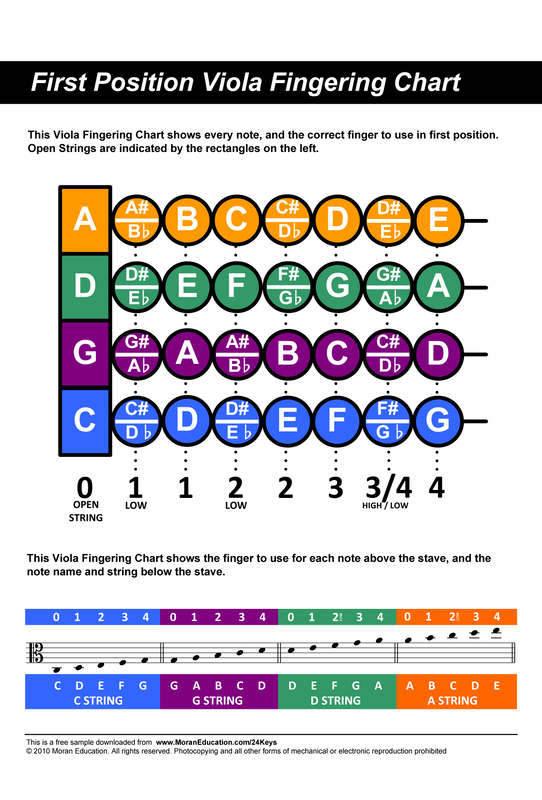
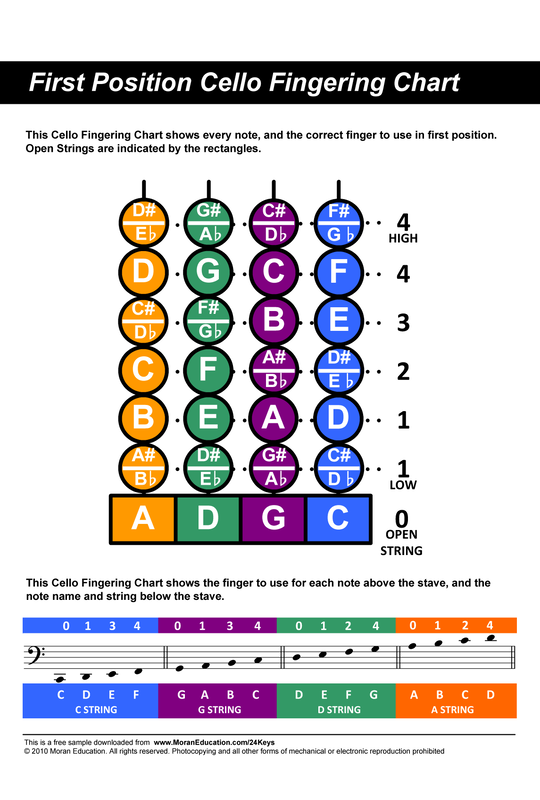

 RSS Feed
RSS Feed